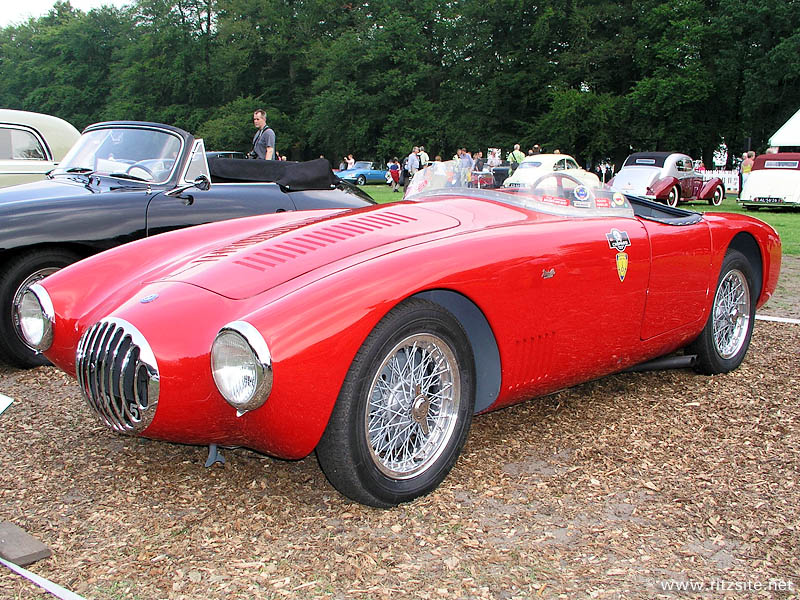|

OSCA Mt4-AD - barchetta body by Morelli - manufactured in 1952
The OSCA name has been overshadowed by that of the men who conceived it, the Maserati brothers, and yet it was worn by one of the most important sportscars of the early post-war era in Italy. After having to sell their original company to the Orsi family the remaining Maserati brothers started anew in 1947, establishing a company named OSCA (short for "office specialized in the construction of automobiles") in Bologna, Italy. Like before, the Maserati brothers were mainly interested in making racing cars and they set out to create a contender for one of Italy's most popular racing classes: the 1100 cc sportscar class.
The small cars which competed in this class were lightweight, purpose-built and street legal 2-seaters which in the early days could easily be converted from sportscar to single seater racing car by removing some bits of the car, depending on what kind of race the car was entered in. The key element in this design of the Maserati brothers was the engine; a beautiful 1092 cc single overhead camshaft 4-cylinder aluminum unit which originated from the 6-cylinder engine the brothers had made for the Maserati A6 GCS. It was perfectly finished, ingenious, well-balanced and durable and produced about 80 hp. Around this engine a relatively simple but effective chassis was constructed and the package was finished by fitting aluminum bodywork hand beaten to order by one of Italy's many traditional coachbuilders. And so the new OSCA Mt4, sometimes referred to as the 1100, took to the track in 1948.
It was the start of a long line of racing successes for the Mt4, which became a dominant power in the small-engined racing class in Italy and abroad. The 4-cylinder engine evolved into a varied range of specifications, displacing between as little as 750 cc and as much as 1500 cc and featuring double overhead camshafts and twin ignition in the most potent versions, offering up to 135 hp. The list of victories of the Mt4 is enormous, including class wins in the Mille Miglia, Targa Florio and Le Mans races, but its most striking result was the overall victory in the 1954 Sebring 12 Hour race in the USA, with Stirling Moss and Bill Lloyd driving. It often beat much larger racing cars because of its favorable power-to-weight ratio, driveability and well thought out construction.
The Mt4 was not only successful in racing, it also sold well. It was produced between 1948 and 1957 and about 100 were made. This may not seem much, but remember that this was a full-fledged competition racing car and not something to tour around in. Each of these cars was more or less unique, differing in bodywork and specifications. From about 1950 most of the Mt4 chassis were fitted with typical Italian spyder or barchetta bodywork, where the older cars had more cigar-like shapes with cycle-wing fenders over the wheels. Only very few Mt4 chassis were fitted with closed bodywork. The design and manufacturer of the body was up to the customer, but a popular choice was a barchetta body by fratelli Morelli like is shown here. About 30 of these were made, handcrafted and distinguished by their typical chrome round or oval grill in front.
OSCA struggled to replace the Mt4 with an equally successful racing car. It made cars for a number of different racing classes, including even Grand Prix cars, which often failed to make an impact. OSCA introduced a sporty 1600 cc road car in 1960, based on the engine developed by OSCA for the Fiat 1500S, of which a few hundred were made. It unfortunately didn't save to company and OSCA was sold to the MV Augusta motorcycle company in 1963. With the Maserati brothers gone OSCA fizzled to an end in 1967 and this small but important make was soon forgotten by most.
Yet the enthusiasts who do remember the great Mt4 pay huge sums to own one these days. It still is a blast to drive, it makes a bone chilling sound while driven in anger and its better built than a contemporary Ferrari. A true work of automotive art, no frills just thrills, the essence of an Italian sportscar; who wouldn't want that?
© André Ritzinger, Amsterdam, Holland
|
